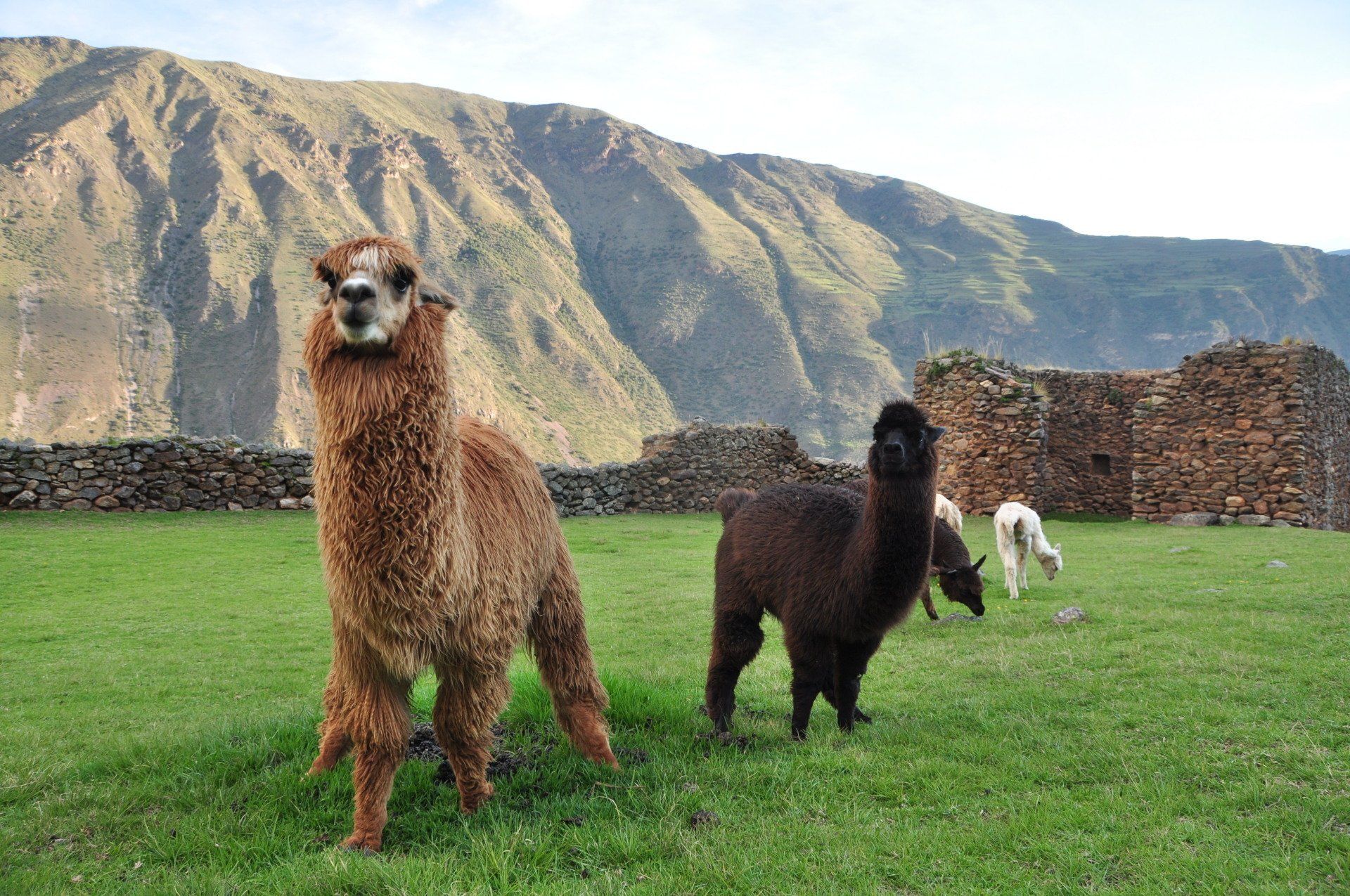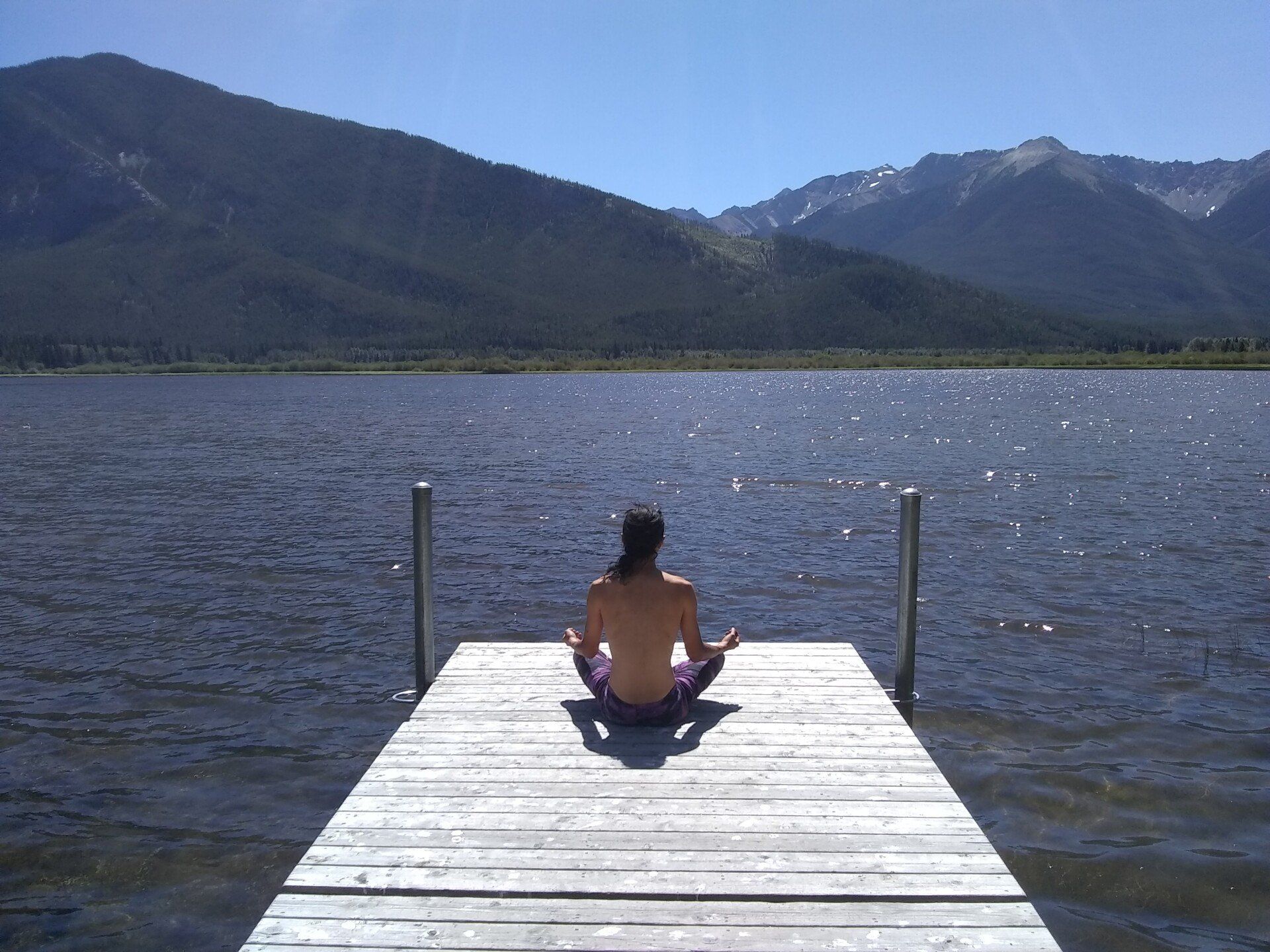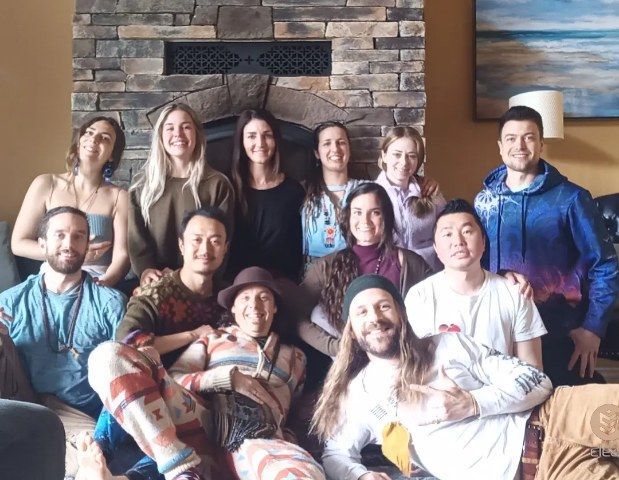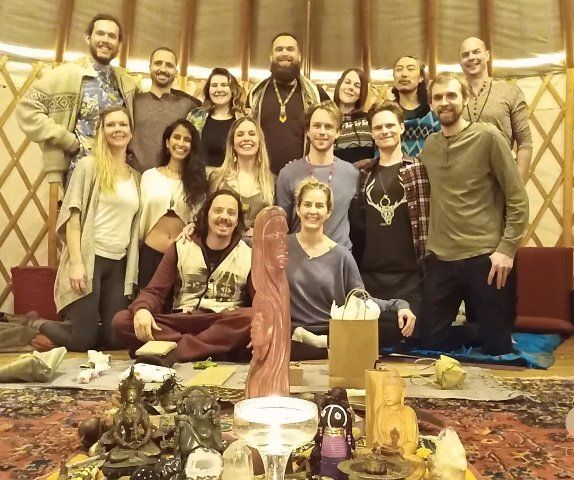10 Days of Quiet - Vipassana Meditation
Andrew Lee • May 19, 2014
This is a subtitle for your new post
Originally published May, 2014
By taking a 10-day retreat I received an intense introduction to the path of Dhamma, and took my first small steps on what could be a long life journey to enlightenment.
The path of Dhamma was discovered by Gotama in 5th century BC. Gotama practiced Vipassana meditation until, one day, as he sat under the Bodhi tree, he attained enlightenment and became a Buddha. At that moment he eliminated all of his miseries, leaving his mind with only love and compassion. Gotama the Buddha, enlightened at the age of 35, then spent every waking moment of the next 45 years of his life, right until the moment of his death, teaching people the path of Dhamma.
What truly sets the path of Dhamma apart from any other way of life is it's universal and non-secular, thus, it is accessible to all individuals regardless of religion or race. Dhamma does not contain any gods or idols, no rites or rituals. Thus, anyone can take the path of Dhamma without renouncing their own belief system. Even "the Buddha" is neither god nor idol; anyone who becomes enlightened is technically a Buddha. This means you or I could become a Buddha - we only need to become enlightened.
But isn't Buddhism a secular religion, you ask? After Gotama became Buddha, he taught only the path of Dhamma to the world, nothing else. Buddhism sprung from the Dhamma teachings, as a new religion, constructed by others who slightly tweaked Dhamma. Even the subtlest of changes no longer made it universal. Instead, these changes made it secular, and tainted the purity of the path of Dhamma.
The path of Dhamma preaches three universal aspects: sīla, samādhi and paññā. These words are in the ancient northern Indian language of Pali, now lost to the world, originally used by Gotama in his Dhamma teachings. Dhamma is in Pali, while today's more popular term Dharma is the same word in Sanskrit.
Sīla, or morality, is good behaviour, consisting of 5 precepts: no killing, no stealing, no telling lies, no sexual misconduct and no intoxicants.
Samādhi is mastery of the mind, which is achieved through the act of meditation.
Paññā is wisdom, attained through practicing samādhi and gaining understanding of all impermanence, or anicca.
The 10-day retreat puts these three universal aspects into practice. Strict rules during the retreat helped to achieve the 5 precepts of sīla. During the entire course, sitters (participants) take Noble Silence, which means they do not talk to anyone (except the managers and teachers as required) nor make any eye contact. New students eat only fruit past noon, old students (returning students) do not eat anything past noon, they are allowed only tea. There are no reading or writing materials, nor electronic devices including cell phones. Males and females are segregated the entire time in roped off areas, like invisible walls. All possible distractions are removed, forcing sitters to be introspective.
Meditation is practiced about 11 hours per day, developing samādhi, mastery of the mind. Days 1-4 involve the practice of Anapana meditation. Anapana focuses on the breath and the physical sensations around the area of the nose. This sharpens the mind and prepares it for the next step, which is Vipassana meditation, practiced on Days 5-10. Vipassana involves objectively observing the entire body, detecting sensations - throbbing, heat, cold, pain, itching, tingling, ants crawling, etc. Once the sitter advances through Vipassana, he or she learns paññā, or wisdom, by detection sensations throughout the entire body at once, with a complete poise and calm, mindful yet unreactive - with a zen mind.
In an advanced stage of paññā, the sitter experiences the entire body at a subatomic level, vibrating, experiencing the Law of Nature within oneself, that of continuous change, or all impermanence, anicca in Pali. This experience reminds me of the Matrix, the moment when Neo realizes he is The One, and he sees everything as code. This is enlightenment.
So how exactly does this work? Prepare yourself for a philosophical barrage.
When we experience a reaction (saṅkhāra) to a sensation at a conscious level, that reaction sinks into our mind's subconscious, like an abyss. Since the moment of our birth, our subconscious begins to accumulate all of our saṅkhāras. This is why we react negatively to things - even if we pretend things don't bother us at the conscious level, we still feel negativity, and the source of the negativity is in the root of our minds, in our subconscious.
Through objectively observing one's own body, treating all sensations equanimously (not having preference for one type of sensation over another), the mind trains itself not to react to sensations caused by external objects on the body, or to sensations of thought in the mind. The conscious level of the mind develops resistance to cravings (attachments) and avulsions (negative reactions), the source of all misery. Soon, the conscious mind conquers its cravings and avulsions. However, this is only the surface level of the mind. Once the conscious level of the mind is purified, then all of those saṅkhāras accumulated from the past, begin to bubble to the surface from the subconscious mind.
Over many years of practice, the subconscious mind also becomes purified of all cravings and avulsions. Then enlightenment will be reached, the mind's source of all misery is eliminated, and all that's left is love and compassion.
Daily meditation was instructed by audio and video recordings of S.M. Goenka from India. Vipassana meditation got rid of his migraines, and caused him to renounce his life of business and start a non-profit to spread the Dhamma teachings
So that's how it works! If you're still not convinced I will throw you one more bone to chew on...
While most belief systems ask you to behave with morality, the temptations are always present, causing people to break their morality. Religions ask you to accept its theories at a surface level, however, this does not address how the subconscious mind thinks and reacts to temptations. With Dhamma, sitters go beyond just accepting the theories of Dhamma; they use experiential learning, through meditating and looking inward, to confirm that those theories are true. This is the true hook of the path of Dhamma.
Experiential learning provides the ultimate wisdom. When modern scientists recently used quantum theory to determine that all matter, animate and inanimate, was made of subatomic particles, vibrating at blinding speeds, they were shocked to find out that an enlightened being in India already obtained this knowledge. Scientists had the theory but not the experiential learning, which was accomplished by the enlightened being through looking inward.
This is the ultimate example of a mindblowing connection between modern and ancient science.
I entered the 10-day retreat simply looking for some peace and quiet from the fast-paced ultra distracting city life, and also for a new experience which a friend recommended as life changing. I came in without any idea of what I was about to do or learn, but with an open mind. I emerged from it feeling very happy, like a thin shield surrounded me, repelling negativity. The truth is, there is no shield, and that negative sensations were (and still are) hitting me 24/7, but I chose not to react to them. This is what Dhamma taught me, and as I was able to learn through experience.
My best friend Henry happened to complete the same 10-day Vipassana meditation retreat in India at nearly the same time (he will also blog about it) and he also had a similar experience.
This certainly was no vacation. It was hard work, probably harder than my office job, and I went through many highs and lows during my practice, as did all sitters, many who returned several times. But the benefits are farther-reaching than any stereotypical vacation.
You can do the same. I highly recommend this to you, especially if you experience negativity and stress from all directions on your daily path. Even if you are generally a happy person, life is full of ups and downs, and practicing Dhamma enables you to weather those ups and downs with a strong determination (adhiṭṭhāna). And it's amazing the difference that simply being distraction free and able to be introspective can have on your mind.
The non-profit organization, simply Dhamma, holds courses almost all over the world. Payment is by donation after the course. Check it out at www.dhamma.org.
Thanks for reading!
~Metta (Pali for loving compassion)

"People shouldn't be afraid of their governments. Governments should be afraid of their people." This phrase from my favourite movie alludes to the fact that the people should be the prevailing force that keeps their government in check. At some point a government becomes too big and starts looking after its own interests, no longer serving the needs of the people it was created for. Governments have long been the dominant organizations of the 20th century. In the 21st century technology corporations are eclipsing governments. Rapidly advancing technology has increased not only the influence of these national and multinational organizations, but their ability to monopolize even more power. When organizations reach a certain size, just like governments, they no longer act to serve the people, but their own interests. T here are plenty of examples of this throughout history. Facebook was recently exposed, when a former employee and whistleblower testified to the US Senate that the company repeatedly faced conflict of interests over profits versus reducing division, and always put profit first. Polarization for Profit How was FB able to do this? Typically if a company was exposed for not serving its customers' best interests, customers would take their business elsewhere. But with social media, there is almost nowhere else to go. FB has cornered the market, and intentionally bought or squashed competitors to cement its dominance in the space. Undermining free market principles has allowed FB to serve its own interests over the interests of its customers. They are maximizing their profit by allowing dishonest science to go viral, and allowing divide and conquer to occur. Facebook isn't the only big tech company guilty of this activity. Google, Microsoft and Apple have been sued for antitrust actions . And big tech isn't the only corporate sector valuing profit over people. Nearly all the largest corporations are guilty of some sort of fraudulent behavior, whether it's big oil, big pharma, big agriculture or big food. Governments are not only complicit in allowing corporate abuse to occur, they are often hand-in-hand with corporations and mainstream media. I've seen this first-hand with my experience at the Fairy Creek Blockade , the largest act of civil disobedience in Canadian history, preventing old growth logging on Vancouver Island. On the ground at Fairy Creek I've witnessed a coming together of some of the most beautiful and inspiring humans, passionately protecting the environment against corrupt political leader Premier Horgan, who went back on his word to stop old growth logging. In the news, however, there's little to no coverage of the events, and what coverage there is, is highly skewed against the protesters. It was here where my direct experience caused me to lose faith in mainstream media, and to see how they are under the sway of existing power structures. To see how they would take certain photos or video snippets and portray them in a different light, to make protesters appear irresponsible or incompetent. Or to portray the Premier's words and actions as if he was resolving the issue, when in reality he was deceiving the public. The Psychology of Polarization So why, on a psychological level, is polarization catalyzed by social media? It's quite simple really. Technology has eroded the quality of communication between people. There is a richness to face-to-face communication that cannot be conveyed. Studies have shown that 90% of communication is nonverbal (body language and voice tone), meaning only 10% of communication is through words alone. Words alone are such a poor quality of communication that they do not properly express the author's full meaning, and are too easily misinterpreted by the reader due to their own biases. This is especially true with words on a screen, transmitted through instant messages or social media posts. And yet it has become the most dominant form of communication due to its convenience. How many times did you misinterpret a text or a social media post, and respond with a critical comment? How often did this needlessly escalate into a full blown conflict? It happened quite a bit in the past with me, and I eventually learned to resolve disagreements with a phone call or meeting face-to-face. Unfortunately, too many people rely on texting because they have gotten too used to it and have lost their ability and initiative to resolve conflicts in person. Humans are still wired for face-to-face communication, and this is particularly necessary when resolving conflicts. Today, we are creating conflicts through texting and comments on social media posts. This is a recipe for disaster, a vicious cycle of misinterpretation where one comment blows up into massive conflicts. And, as mentioned in the previous section, Facebook is aware that this is happening on their platform, and instead of working to resolve it, they are exacerbating the problem. But the sole goal, the very existence of a corporation, is profit. Any non-financial consequence is a mere externality. Bridging the Communication Gap Seeing the bigger picture isn't easy. It takes a trauma-informed understanding of how the world got this way, in order to move forward with nonviolent solutions that bring people together, not further apart. The majority of people are living in fear. Their nervous systems are constantly in hypervigilance, meaning they are on edge, ready to engage in fight or flight. Showing them disagreeable information will only trigger their fight or flight, and potentially start a vicious cycle of arguing. People living in this way carry a narrowed perspective, focusing only on survival, and are thus unable to see the bigger picture. In order to engage with people on the other side of the coin, social media is not the answer because its low quality medium of communication creates further division. What's needed is the exact opposite . The one antidote in a time of such extreme polarization and division is face-to-face conversations with those we disagree with. This is also exactly what is being discouraged by the pandemic. Mask mandates have undermined our ability to see and read facial gestures. Closures of small businesses and gathering places have prevented the opportunities for holding the gatherings and face-to-face conversations needed to bridge this gap. It is critical to be able to spend time with people we don't know in order to break down each other's walls, and eventually feel safe sharing information without feeling antagonized. The Way Forward More and more people out there are realizing deep down that not all is as it seems. If I have a plea to you, it is, against all odds, to take the courageous step to gather with people and have face-to-face conversations again. If you can do this with people you already feel safe with and who share your views, then do this with people who you don't agree with. Start by smiling at strangers outdoors. Engage in friendly conversation. Unmasked people have been framed as antagonists. If you are brave enough to go into indoor businesses without masks, smiling at people completely disarms their hypervigilance. This is exactly what I have been doing, and the vast majority of my interactions have been positive or innocuous. I've had people smile back at me and acknowledge my bravery, and others follow my lead and take off their mask. Unmasked and smiling, you are a shining light, a warrior. You are an inspiration to others who sense something is wrong but are too afraid to act out against the narrative. Even if you have confrontations, smiling and holding your head high, proves to the confronters that you are a compassionate individual. Not only are you disarming the narrative, but you are disarming nervous systems. I certainly have had a few business owners ask me to put on a mask or leave, and obliged their concerns with a smile. If conflicts occur through your social media platforms, engage directly with others through phone calls or voice messages. This has been my most effective tool for deescalating conflicts. However, I choose phone calls and voice messages over texting more and more often these days in general, because my friends and I value the richness of expressing in voice and hearing each other's voices. Polarization is one of the greatest invisible threats to society, preventing people from uniting in action against tangible and urgent threats. It is up to all of us individually to overcome these barriers, through gathering and having face-to-face conversations again, with those we do and do not share views with.










